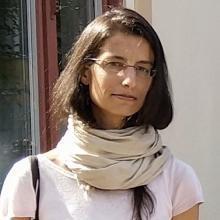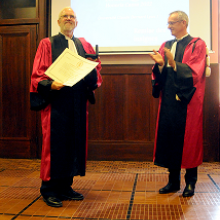Bioinformatics, Phylogeny and Evolutionary Genomics Group
Members
Maîtresse de conférences
UCBL
Tel: 04 72 44 84 87

Professeure des universités
UCBL
Tel: 33 04 26 23 44 76
Doctorante
UCBL
Enseignant-chercheur CPJ
UCBL

Directeur de recherche
CNRS
Tel: 33 04 72 44 62 97

Professeur d'université émérite
UCBL
Tel: 04 72 44 85 60
Ingénieur d'études CDD
CNRS

Directeur de recherche
CNRS
Tel: 33 04 72 43 11 67

Maîtresse de conférences
UCBL
Tel: 33 04 72 43 29 18
Doctorante
UCBL

Chargée de recherche
CNRS
Tel: 33 04 72 44 85 60

Directeur de recherche
CNRS
Tel: 04 72 44 84 87

Chargée de recherche
CNRS
Tel: 04 72 43 13 44

Directeur de recherche
CNRS

Maître de conférences
UCBL
Tel: 04 72 43 35 83

Chargée de recherche
CNRS
Tel: 04 72 44 81 42
Doctorant
CNRS

Directeur de recherche
CNRS
Tel: 33 04 72 44 62 96

Chargée de recherche
CNRS
Tel: 04 72 43 26 28
Doctorant
UCBL

Chercheur invité
UCBL
Our group focuses on two main axes: phylogenomics (i.e. the inference of evolutionary history based on genomics data) and evolutionary genomics (understanding the molecular and population processes that drive genome evolution). We see genomes both as a subject of research (how do genomes evolve, why are they structured the way they are?), but also as a main source of empirical knowledge about the macroevolutionary patterns (what do they tell us about the history of life on Earth?), or about the phenotypes and life-history strategies of organisms. Our works heavily rely on methodological developments (bioinformatics, modeling and statistical inference).
Evolution of genome architecture and expression
Genomes are the result of a long-term evolutionary process, shaped by multiple evolutionary forces. Some genomic features are adaptive (i.e. are beneficial for the fitness of organisms), others result from non-adaptive processes (random drift and biased gene conversion - BGC) or are caused by conflicts between multiple levels of selection (e.g. meiotic drive or the spread of selfish genetic elements). We explore different aspects of genome architecture (base composition landscapes, genome structure and size, impact of transposable elements, …) or functioning (gene expression, lncRNAs, epigenetic landscapes, …), and try to disentangle the relative contribution of adaptive and non-adaptive processes to their evolution. For this purpose, we consider both the molecular mechanisms (mutation, repair, recombination) and the population processes (selection, drift, BGC, …) that shape genetic variation.
Phylogenomics
We are interested in reconstructing the history of life on Earth. This research unfolds along several axes. First, we develop phylogenomic databases of aligned genetic sequences (e.g. BIBI, RiboDB or HOGENOM). Second, we conduct methodological research on how to accurately reconstruct deep phylogenies, infer divergence times, reconstruct ancestral genetic sequences, gene repertoires and life-history traits. This methodological work is translated into publicly available software programs (e.g. SeaView, PhyloBayes, Coevol). Finally, we apply these approaches to several important problems, among which: reconstructing the phylogeny of animals, of archaea, or the global tree of life; using phylogenies and ancestral gene repertoires to investigate the evolution of complex systems and the emergence of molecular and cellular functions in the three domains of life; reconstructing ancestral genetic sequences, a research activity that has industrial and biotechnological applications.
Teaching and outreach
We teach at University Lyon 1 (Master Bioinfo@Lyon), INSA, ENS Lyon, we organize bioinformatics internships. We regularly give conferences on evolution (tree of life, human evolution, genetic diversity, …).
Prospective students and postdocs are invited to apply, as we often welcome visitors for internships or research projects.
Keywords: Molecular evolution and Population Genomics; Phylogenomics; Computational Genomics; Comparative genomics; Bioinformatics; Statistical inference.
Publications
Display of 871 to 900 publications on 1110 in total
RTKdb: database of Receptor Tyrosine Kinase.
Nucleic Acids Research . 31 ( 1 ) : 353-8
Journal article
see the publicationA method to study the microscale 3-D spatial distribution of Bacteria in soil.
Mycological Research . 107 : 1221-1230
Journal article
see the publicationPhylogenetic analysis of proteins homologous to the Salmonella MgtC virulence factor
ASM Conference on Salmonella: Pathogenesis, Epidemiology, and Vaccine Development .
Conference paper
see the publicationA novel method for characterizing the microscale 3D spatial distribution of bacteria in soil
Soil Biology and Biochemistry . 35 ( 12 ) : 1537-1546
Journal article
see the publicationSex chromosomes: how X-Y recombination stops
Current Biology . 13 : R641-R643
Journal article
see the publicationGenome evolution: recombination speeds up adaptive evolution
Current Biology . 13 : R68-R70
Journal article
see the publicationBiased gene conversion: implications for genome and sex evolution
Trends in Genetics . 19 : 330-338
Journal article
see the publicationY-chromosomal evidence for a strong reduction in male population size of Yakuts
Human Genetics . 110 ( 2 ) : 198-200
Journal article
see the publicationExpected Relationship Between the Silent Substitution Rate and the GC Content: Implications for the Evolution of Isochores
Journal of Molecular Evolution . 54 : 129-133.
Journal article
see the publicationDetecting genomic features under weak selective pressure: the example of codon usage in animals and plants
Bioinformatics . 18 : S91-S91
Journal article
see the publicationA phylogenomic approach to bacterial phylogeny: evidence of a core of genes sharing a common history
Genome Research . 12 : 1080-1090
DOI: 10.1101/gr.187002
Journal article
see the publicationBetween-group analysis of microarray data
Bioinformatics . 18 : 1600-1608
Journal article
see the publicationUse and misuse of correspondence analysis in codon usage studies
Nucleic Acids Research . 30 : 4548-4555
Journal article
see the publicationRecombination rate and the distribution of transposable elements in the Drosophila melanogaster genome
Genome Research . 12 : 400-407
DOI: 10.1101/gr.210802
Journal article
see the publicationWhat is the relevance of obtaining multiple blood samples for culture? A comprehensive model to optimize the strategy for diagnosing bacteremia
Clinical Infectious Diseases . 35 ( 7 ) : 842-850
DOI: 10.1086/342383
Journal article
see the publicationModelling the competitive growth of Listeria monocytogenes and Listeria innocua in enrichment broths
International Journal of Food Microbiology . 73 ( 2-3 ) : 261-274
Journal article
see the publicationArchaeal phylogeny based on ribosomal proteins
Mol Biol Evol . 19 : 631-639
Journal article
see the publicationEubacterial phylogeny based on translational apparatus proteins
Trends in Genetics . 18 ( 1 ) : 1-5
Journal article
see the publicationConflicting phylogeographic patterns in rRNA and nifD indicate regionally restricted gene transfer in Bradyrhizobium.
Microbiology . 148 ( Pt 8 ) : 2557-65
Journal article
see the publicationROSO: A software to search optimized oligonucleotide probes for microarrays
COST853: Agricultural Biomarkers for Array-Technology .
Conference paper
see the publicationROSO : A Software to Search Optimized Oligonucleotide Probes for Microarrays
10. International Conference on Intelligent Systems for Molecular Biology (ISMB) .
Poster
see the publicationVanishing GC-Rich Isochores in Mammalian Genomes
Genetics . 162 : 1837-1848
Journal article
see the publicationComparative sequence analysis of the X-inactivation center region in mouse human and bovine
Genome Research . 12 : 894-908.
Journal article
see the publicationEvolution of synonymous codon usage in metazoans
Current Opinion in Genetics and Development . 12 : 640-649
Journal article
see the publicationA mathematical method for determining genome divergence and species delineation using AFLP
International Journal of Systematic and Evolutionary Microbiology . 52 : 573-586
Journal article
see the publicationA mathematical method for determining genome divergence and species delineation using AFLP
International Journal of Systematic and Evolutionary Microbiology . 52 : 573-586
Journal article
see the publicationNUREBASE: database of nuclear hormone receptors
Nucleic Acids Research . 30 : 364-368
Journal article
see the publicationAutomatic RNA secondary structure prediction with a comparative approach
Journal of Computational Chemistry . 26 ( 5 ) : 521-530
Journal article
see the publicationFunctional and evolutionary analysis of a eukaryotic parasitic genome
Current Opinion in Microbiology . 5 : 499-505
Journal article
see the publicationModeling the Lag Time of Listeria monocytogenes from Viable Count Enumeration and Optical Density Data
Applied and Environmental Microbiology . 68 : 5816-5825
Journal article
see the publication
